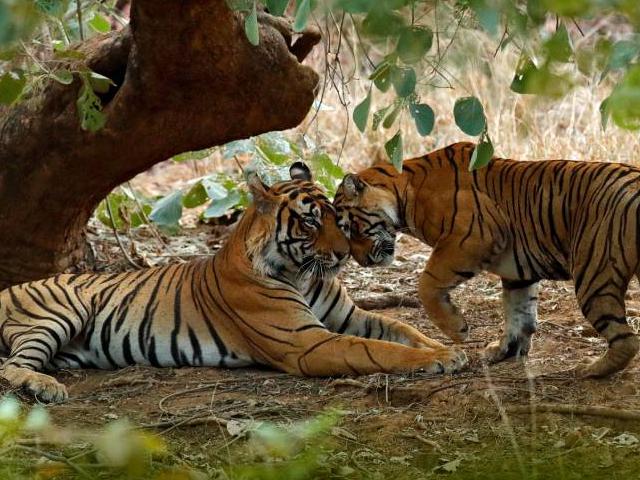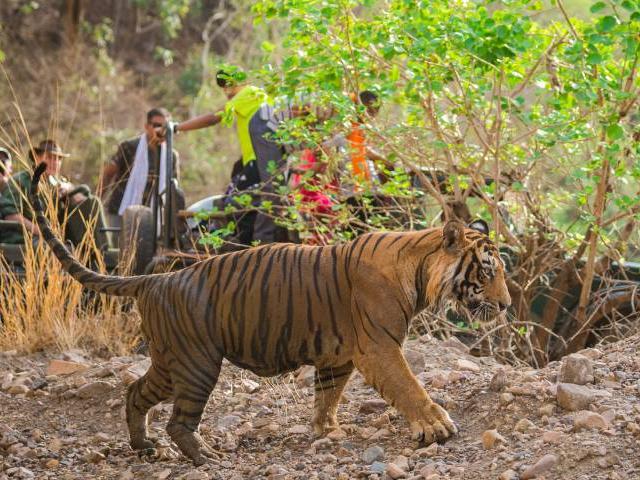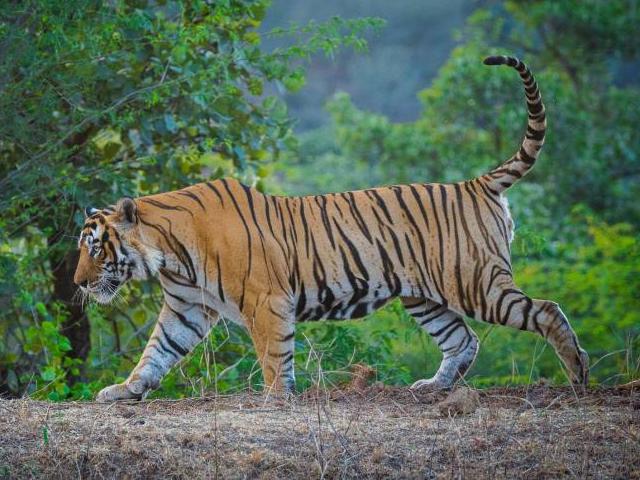NTCA Begins Inquiry into Tiger Crisis
In fact, since 2009, Ranthambore lost as many as 30 tigers. As park tourism flourishes and the population of neighbouring villages increased, there were more frequent fatal human-tiger interactions and poaching. For the first time there was an official admission of “vanishing of tigers”. In February 2022 while answering a question in the state assembly, the Rajasthan government stated that there was no evidence of two tigers (T-20 and T-23) since 2019, seven tigers (T-47, T-42, T-64, T-73, T-95, T-97 and T-92 ) since 2020 and four tigers ( T-72, T-62, T-126 and T-100) since 2021. They include an entire family of 5 tigers including 3 cubs and the male tiger ‘Fateh’ or T-42 .As if waiting for an official admission, the National Tiger Conservation Authority (NTCA) also swung into action and constituted a committee to hold an inquiry.
Also read: Tale of Missing Tigers of Ranthambhore: 4 More Takes the Count to 34
The committee comprises DIG, NTCA Shivpal Singh and wildlife crime control bureau, joint director, HV Girishato, to carry out investigations. Government officials in Rajasthan believe that the tigers jostled for space resulting into territorial fights and their migration from the park. Ranthambore needs to be decongested, they believe. They also feel the tigers are required to be given a safe passage to move out and Ramgarh Vishdhari would connect it with Mukundura Hills tiger reserve. Ramgarh has been a conflict zone for tigers and has a violent history of poaching. In 1991, villagers had clashed with the forest department. Presently, there are reports of “rampant mining” in the Ramgarh . In June 2021, the chief conservator of forests (CCF), Kota, had sought a factual report on illegal mining of sandstones inside Dabi range of Ramgarh Vishdhari.
Illegal Mining in Tiger Corridors
Illegal mining has also been an issue in Ranthambore, the single largest expanse of dry deciduous Anogeissus pendula forest left intact in India. The Aravali and the Vindhyan hill ranges meet here and this confluence is perhaps the reason for the rich bio-diversity of the Ranthambore. The Kundera and Talada ranges in Ranthambore accounted for over half the 13 tigers gone missing since last year. Although forest department officials blamed congestion and territorial fights for the tiger disappearance, wildlife activists said the tigers were vanishing from the two zones where illegal mining and human-animal conflict were high. Officials said six of the 12 tigers went missing between January 2020 and March 2021 from the Kundera and Talada ranges, spread across 125 sq km. Conservation biologist Dharmendra Khandal, who has been raising the issue for long, said a considerable number of tigers missing from a specific area indicate abnormal activity.
Also read: Lonely Tiger Returns Home After One Decade
“Infighting for territory cannot happen at only one place in the reserve.” He added that the number of tigers that went missing has been highest in 18 years, and that too from specific parts of the reserve. Sources in Rajasthan forest department said that , “ revenge killing of tigers” can also not be ruled out in Ranthambore after the tigers kill livestock. They said, “we need to simplify our rules to compensate the villages for cattle loss”. Interestingly, the two ranges are among the three major migratory routes for the big cats, indicating the tigers may have left the reserve. These routes lead to Karauli and Bundi in Rajasthan and Madhya Pradesh’s Kuno Palpur. Equally interesting is the forest department has not found any traces of the missing tigers either in Karauli or Bundi. Tigers also did not reach Madhya Pradesh’s Kuno national park. So where did they go ? Or they were poached as they step out from Ranthambore in the absence of a safe tiger corridor? The crisis reiterates the significance of tiger corridor conservation .The NTCA inquiry should answer these concerns of wildlife lovers.
Politicians Push For Tigers
Also read: Stone Pelting on Tiger Cubs :Kanha Pench Corridor Becomes Conflict Zone
Rajasthan government sources claimed former CM Vasundhara Raje and her MP son, Dushyant Singh, were keen on tiger relocation to Durrah range of Mukundara Hill Tiger Reserve in Jhalawar district while the urban development and housing minister of Rajasthan Shanti Dhariwal wants tigers in Seljar range of the same reserve in Kota district. Lok Sabha speaker Om Birla wants tigers to be relocated to Ramgarh Vishdhari .Another MP Diya Kumari, who represents Rajsamand in the Lok Sabha and has expressed concern over Ranthambore tigers , is also reportedly pushing for Kumbhalgarh sanctuary , which is in her constituency.A tiger was last spotted in the Aravallis in Kumbhalgarh, about 50 years ago.
Images Source: Ranthambore National Park





Comments
Post a Comment